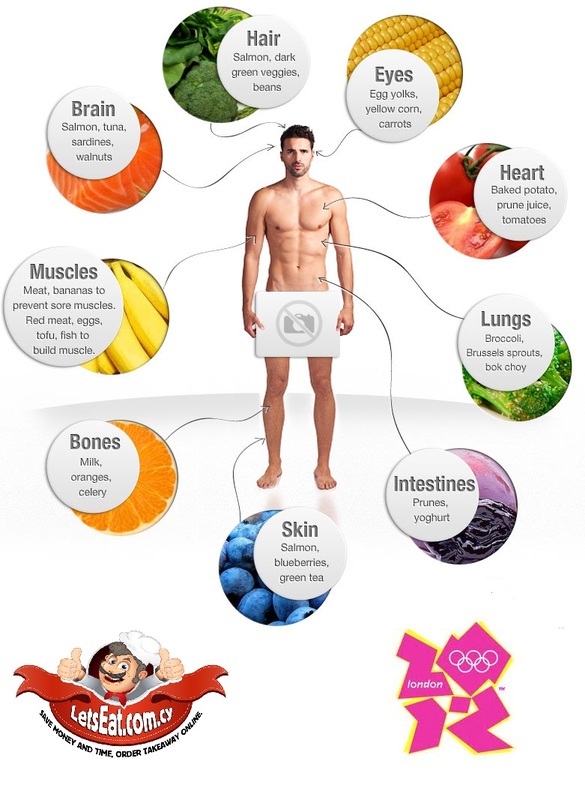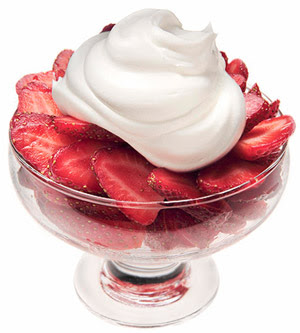 Changing your diet to stop snoring doesn't necessarily mean going on a weight loss program although they may have the same out come.
There is a preconception that snoring is the sole domain of overweight middle aged men. NOT TRUE. It affects both Men and Woman of all ages, shapes, weights and sizes.
Is there any type of food you can eat to stop snoring?
As it turns out, there are some foods that are better than others when it comes to reducing snoring.
Here are some possible dietary additions that might help. (Ladies and Gentlemen: you might want to mention these things to your bed mates as foods that just might mitigate the snoring routine...) 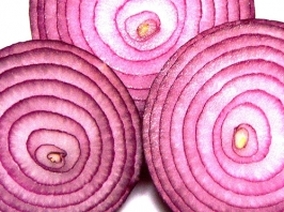
Remedy: Eating onions is a good way to help reduce congestion. Yes, onions. While they might not lead to the most aromatic breath, onions act as natural anti-inflammatory. Often, they help to reduce the symptoms of cold and flu. Onions not only act as natural decongestants, but they are also a best source of antioxidants.
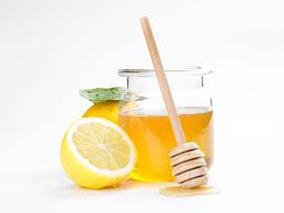 Remedy: You can try drinking honey and lemon in hot water. The honey and lemon can also act as a good snoring solution. Honey acts as an antiseptic and also natural decongestant. You can also include a few teaspoons of honey in a fresh lemonade or lemon juice and drink the mixture before going to bed
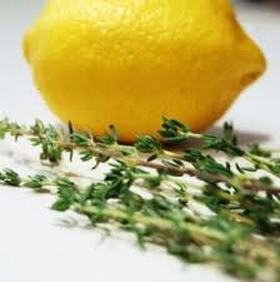
Remedy: The mixture of lemon and thyme is also a best one to reduce the mucus in your air passages. You can drink lemon tea before going to bed or, you can add thyme to roast dinners or casseroles
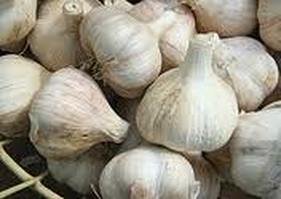
Remedy: Including hot foods like garlic and horseradish to your diet can help reduce snoring. These foods can help to dry up the airways and nasal passages thus reducing the excess
Foods that might be working against you:
If you're an ice-cream eater (you know the routine; television and a bowl of luscious mint chip or precious chocolate fudge swirl...); you might want to skip this snack if you're feeling amorous. Dairy foods cause snoring and the closer you eat them toward bedtime, the worse or "louder," things can be.
Here's how it works: dairy products can increase the mucus in your nasal passages, thus your airways become narrower and restrict the flow of oxygen.
Remedy: You can try switching to soy products, rice or almond milk to see if it makes a difference for you. Extra mucus can also form with the consumption of baked foods, chocolates, fried foods and frozen foods closer to bedtime.
And finally, the last culprit is alcohol. That late night martini is actually working against you. It doesn't lead to a better quality of sleep, so, avoid consuming alcohol.
Ironically, sedatives, which may be prescribed like sleeping pills, can cause you to snore during sleep as they may actually suppress your breathing drive.
Aside from what you eat, controlling your portions and actually losing weight can be one of the number one ways to eliminate or greatly reduce snoring.
Good luck and remember,
"eat right and sleep tight."
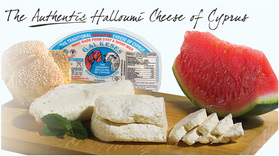 Do you know Halloumi? Did you ever try?
If you answer the above questions with 'Yes', then I know that you love Halloumi and you will like my collection of delicious and healthy Halloumi recipes.
If you answer the above questions with 'No', then I want to invite you to get to know Halloumi and discover how many different dishes you can prepare in a fast and easy way with LetsEat's collection of the Halloumi recipes.
What is Halloumi Cheese?
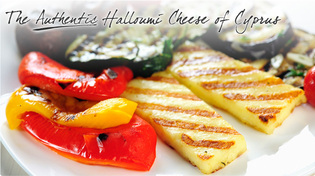 Halloumi is a traditional cheese from Cyprus, the island in the Mediterranean Sea.
Halloumi cheese has a higher melting point than other cheese what makes it suitable cheese for grilling and frying. You almost won't find any BBQ in Cyprus without the use of halloumi.
Sometimes you might also come across haloumi cheese or hallomi cheese, which is the same and refers to Halloumi too.
It is also very common in warm months, to eat halloumi together with watermelon. The juicy slices of the watermelon are quite refreshing while the slices of halloumi give the delicious taste.
Halloumi is also one of the dishes that are usually served within a Cyprus Meze and very often you also will see a few slices of halloumi accompanying a cold beer ordered in a taverna.
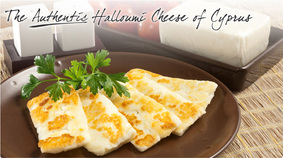 Halloumi, Hallomi or Haloumi Cheese?
Halloumi is produced worldwide nowadays, although its origin is in Cyprus and the East Mediterranean. Within the US halloumi is registered as a protected cypriot product. The reason for not being registered within the EU is to find in a dispute between dairy producers and sheep and goat farmers about the percentage of cow's milk allowed to be used, if any.
In Canada halloumi is registered as hallomi without the 'u' cause of a difference with a local dairy producer.
Haloumi Cheese, with only one 'l' is just one of the typical typing errors for Halloumi Cheese.
Halloumi-crumbed chicken breast Recipe
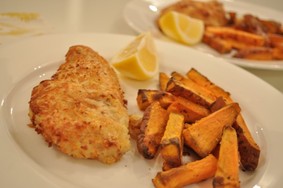 serves 2 - 80g halloumi, finely grated
- 2 tsp lemon zest
- 2 tbsp bread crumbs
- 2 chicken breast fillets
- 1 egg
- 1/3 cup flour
- salt and pepper
- vegetables to serve
- Mix the halloumi, bread crumbs and lemon zest together in a wide shallow bowl and season it with a little salt and pepper.
- In another bowl, whisk the egg.
- In another bowl, tip in the flour.
- Crumb the chicken fillets by dipping them in the flour bowl. Shake off the excess then dip them in the egg. Let the excess egg drip off and then place them in the final bowl – the halloumi crumb. Press them in firmly so they’re well coated.
- Pre-heat the oven to 180C fan-forced.
- Heat a little oil in a frying pan and cook the chicken for 2 minutes on each side until it is browned.
- Transfer the fillets to a lined baking tray and cook them for a further 15 minutes or until cooked through.
- Serve the chicken with vegetables or salad.

When it comes to dieting, it’s hard to separate fact from fiction. Is low-carb the way to go? Should I only eat during certain hours? Should I cut out this or that? Sometimes it seems like there are 5 right answers for every question. Well, wonder no more. Click through to find out the truth behind some of the most popular myths.
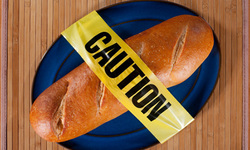
1. Low-Carb Diets Are the Best Way to Lose Weight.
Sure, if you cut out carbs from your diet you’ll probably see some dramatic weight loss in a very short time period. But it’s not sustainable, and it’s not really all that healthy. Carbohydrates are an essential part of your diet, and, once you go off that diet, you’re likely to gain most of the weight back. Instead, try eating better carbs, like whole grains, nuts, seeds, and fruits and veggies
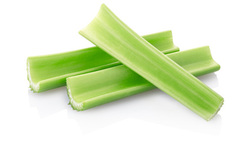
2. Some Foods Are So Low in Calories, You Lose Weight When You Eat Them!
Stop me if you’ve heard this one before: eating celery, cabbage, citrus fruits and other low-calorie fruits and veggies will actually burn calories. Unfortunately, that’s not true at all — these foods are very low in caloric content, but the calories you burn from actually chewing and digesting them are not even close to making up for the caloric content of the food.
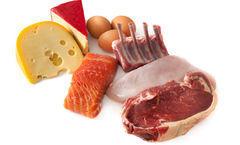
3. Physically Active People Need More Protein.
While it’s true that you need protein to build muscle, the Average western diet contains more than enough of the stuff. Consuming too much protein is, in fact, the bigger issue here.

4. You Gain More Weight From Food Eaten After 8PM.
A calorie is a calorie, whether you consume it at 3PM or 3AM. It may take a little longer for your body to burn off that late-night bowl of ice cream than it will your lunch, since you’re more active during the day, but timing isn’t the issue.
The problem here is that late-night snackers have a tendency to overeat because they haven’t eaten balanced, regular meals through out the day. Want to cut out that late-night snacking? Don’t skimp on breakfast, lunch and dinner!
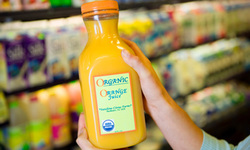
5. Dieters Should Always Avoid Fruit Juice.
Fruit juice in general is not the enemy: all of those fruit “drinks” and “cocktails”—and anything that’s anything less than 100% juice—are. That stuff is chock full of added sugars and high-fructose syrup, which should be avoided by dieters. One thing to keep in mind, though, is that whole fruit is better for you than even 100% juice, since it contains the natural fibers that are left behind in the juicing process
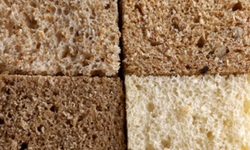
6. Brown Grains are Always Whole Grains.
Just because your loaf of bread is brown doesn’t mean it’s actually whole grain — there are plenty of products that achieve a rich brown color through food coloring alone. Make sure to read the nutrition label before purchasing.

7. Drinking Lots of Water is the Key to Weight Loss.
Water is great, water is important, but it doesn’t help you burn calories, it doesn’t boost your metabolism, and it won’t make your fat magically disappear. Instead, try replacing some of your calorie-filled beverages with plain ol’ H20; upping your water intake alone won’t help you shed the pounds.
You either love it or you hate it, according to the slogan.
And if you are a Marmite fan, the good news is that one of its main ingredients may fight superbugs.
A study found that at very high doses, vitamin B3, also known as niacin, drastically increases the body’s ability to fight the MRSA bacterium, which can cause life-threatening infections if it enters the bloodstream via wounds.
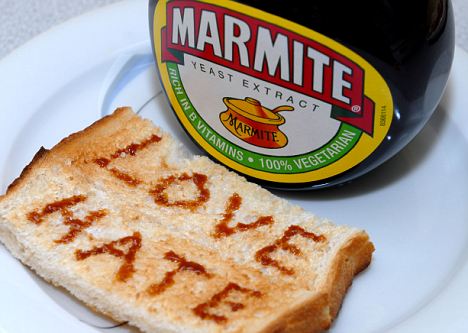
Marmite contains niacin. Super doses of the vitamin could kill superbugs including MRSA.
US researchers believe the ingredient – which is also found in beer, bread and other foods containing yeast – could be used to develop new drugs.
Researchers carried out a number of experiments on both rats and human blood, the results of which were published in the Journal of Clinical Investigation.
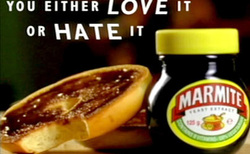 Overall they found that high doses of vitamin B3 increased the number of neutrophils, a type of white blood cell that kills bacteria.
Adrian Gombart, of Oregon State University, said: ‘This is potentially very significant, although we still need to do human studies. It’s a way to tap into the power of the innate immune system and stimulate it to provide a more powerful and natural response.’
But the scientists urged caution, as the research used extremely high doses of the vitamin – far more than is in Marmite or vitamin supplements.
Co-author Dr George Liu, also from Oregon State University, said: 'This vitamin is surprisingly effective in fighting off and protecting against one of today's most concerning public health threats.'
Dr Gombart stressed that so far there was no evidence to suggest normal diets or conventional-strength B3 supplements could help prevent or treat bacterial infections.
Ten years ago he discovered a human genetic mutation that makes people more vulnerable to bacterial infections.
Further work showed that niacin has the ability to "turn on" anti-microbial genes that help the immune system fight off bacteria.
Feeling tired in the afternoon, put down the caffeinated soda and pick up a cucumber. Cucumbers are a good source of B Vitamins and Carbohydrates that can provide that quick pick-me-up that can last for hours.
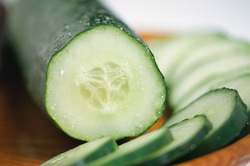 Tired of your bathroom mirror fogging up after a shower? Try rubbing a cucumber slice along the mirror, it will eliminate the fog and provide a soothing, spa-like fragrance.
Are grubs and slugs ruining your planting beds? Place a few slices in a small pie tin and your garden will be free of pests all season long. The chemicals in the cucumber react with the aluminum to give off a scent undetectable to humans but drive garden pests crazy and make them flee the area.
Looking for a fast and easy way to remove cellulite before going out or to the pool? Try rubbing a slice or two of cucumbers along your problem area for a few minutes, the phytochemicals in the cucumber cause the collagen in your skin to tighten, firming up the outer layer and reducing the visibility of cellulite. Works great on wrinkles too!!!
Impress your friends/family/pub quiz team with these fascinating food facts.
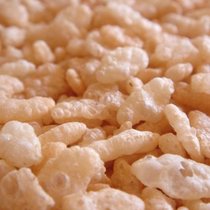 WHY DO RICE KRISPIES SNAP, CRACKLE, POP?
Created similarly to popcorn, rice krispies are made by steamed rice (rice doesn’t have enough moisture in it before) being heated until the grain until the “pop” into crisped rice. thin and hollowed out walls, sealed areas inside where air pockets have formed. When cold milk is added the shift in temperatyure causes these weak walls to suddenly fracture and make the snap, crackle and pop
 CARROTS WERE PURPLE, WHITE, RED AND YELLOW BEFORE ORANGE
Yes the lovely veggie was not always a bright and cheery orange colour. Centuries ago, as early as 900AD, in Afghanistan they were predominantly purple and yellow, with other colours appearing over the hundreds of years to follow as the carrot spread around the globe. It wasn’t until the 16th century that the orange carrot started to be cultivated in the Netherlands. A popular theory holds that the carrots were selectively bred to be orange to honour William of Orange, leader of the Dutch revolution against the Spanish, however there is no evidence to support this. Today you can still buy the other coloured varieties, though they’re far from the popularity of the orange version.
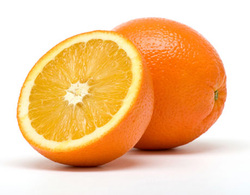 THE COLOUR ORANGE COMES FROM THE FRUIT
Which came first, the chicken or the egg? Nurture versus nature? Orange the fruit or orange the colour? Well we can answer that last one for you! The word “orange” evolved from the Spanish word “naranja” which itself evolved from the Sanskrit for orange tree, “naranga”. Before the 16th century, in English the colour orange was in fact called “geoluhread” aka “yellow-red”, seriously, we were that original. So there you have it, until we found the orange fruit, orange was just a weird shade of yellow and red.
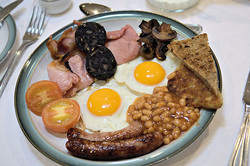 DINNER USED TO MEAN BREAKFAST
Fancy confusing your friends and family? The English word for dinner comes from the old French “disnar” which means to “break fast”. Traditionally dinner (AKA “breakfast”) was the first and largest meal of the day, eaten at noon. A lighter meal (supper) was eaten later in the day. People eventually started to regularly eat a meal before dinner but rather than call this meal dinner (which meant “break fast”) they started calling it the literal English name, “breakfast”! Meanwhile the biggest meal moved later in the day until eventually a lighter meal was eaten at noon (lunch) and the evening meal became lunch. So yes, you start your day with breakfast and end your day with breakfast.
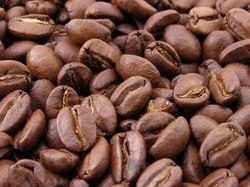 THE WORLD’S MOST EXPENSIVE COFFEE COMES FROM POOP
Kopi Luwak are coffee beans that come from the poo of a palm civet, a cat sized mammal mostly found in southeast Asia. The animals eat coffee berries and the beans come out the other end, keeping their shape. The coffee retails for around $160 per pound, making it the world’s most bizarre and expensive coffee. The real question is: who discovered civet poop made great coffee?
 Did you know…lemons contain more sugar than strawberries. 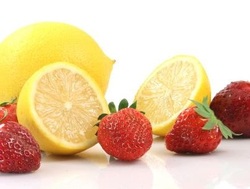 The fact that a lemon contains more sugar than a strawberry, is another remarkable funny fact that is well spread around the internet. The acid within the lemon masks the sweetness of the sugar, at least that is the explanation. To determine if this is true we first need to agree on how to compare the two, since a lemon is of course much bigger and heavier than one strawberry. To make a fair comparison we should look at the amount of sugar per, lets take the standard, 100gram. Then we will see that a lemon contains 2.50g sugar per 100g, and a strawberry contains 5g sugar per 100g. Twice the amount of that of a lemon! So we can safely conclude this fact is not true and debunked; A lemon does not contain more sugar than a strawberry In fact, a strawberry contains twice as much sugar as a lemon.
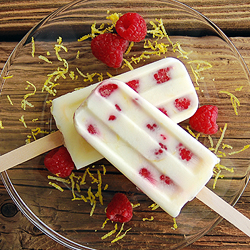 Packed with vitamin c, antioxidants and power boosting protein, this Raspberry Lemonade Yogurt Ice Pop is the perfect summer treat. If you are looking for a tasty way to beat the summer heat in Cyprus, the Raspberry Lemonade Yogurt Ice Pop is just the perfect treat LetsEat have a deep love and appreciation for all things lemon. Whether its sweet treats, savory eats, household remedies or beauty treatments we are always happy to use lemon. We always have a fruit basket full of lemons and a good portion of the year we are fortunate enough to have a few tree full of lemons.
As we was preparing these fabulously flavorful frozen treats, all we could think about was biting into one. Savoring the layers of tart lemon juice and lemon zest and contrasting sweet raspberries perfectly combined with smooth and creamy protein packed yogurt. We very carefully constructed each popsicle. Took my time, I mean look at those raspberries, all with the end game in mind. These were mine! LetsEat doesn't care for popsicles that much and Munchkins palette isn't quite developed enough to really enjoy lemon yet.
Thankfully raspberries are on sale so we can really stock up on these ice pops. Low calorie, healthy treat. The perfect dessert for us to eat!
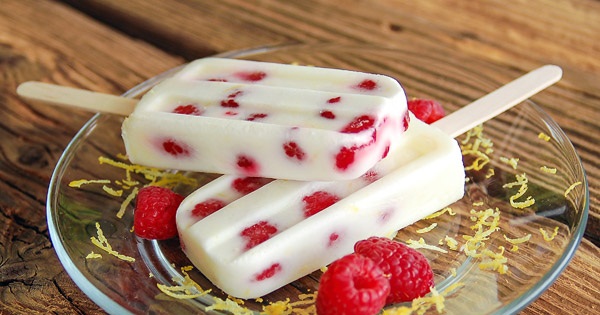 Enjoy! You might want to hide these though. Seriously, behind the vegetables or something. Raspberry Lemonade Yogurt Ice Pops
makes approximately 10 ice pops
¼ cup granulated sugar
1 tablespoons lemon zest (zest of one lemon)
½ cup fresh lemon juice (about 2 lemons juiced)
1 ½ cups plain yogurt
6 ounces fresh raspberries, cleaned (large ones cut in half)
Evenly distribute raspberries between ice pop molds. Set aside.
In a medium bowl, combine lemon zest and sugar. Smash lemon zest with a fork until all sugar is coated in lemon. Add lemon juice and yogurt. Stir until well combined.
Pour into molds. Cover with aluminum foil and add sticks. Freeze for 4-24 hours.
Enjoy!!!
Be Well Fit! Eat Like an Olympian
Feeling a tad guilty that you’ll be cheering on all those impeccably fit Olympic athletes this summer, with a beer in hand and gut hanging out? Lucky we’ve created a great infographic of the ultimate fitness foods.
We can’t all get to Lycra wearing status, but if you’re inspired to get healthy, keep these foods in mind next time you’re thinking about what to eat. Infographic by the team at Let's Eat.
Did You Know? Tennis fans at this year's Wimbledon Championship fortnight will tuck into over 23 tonnes of fresh strawberries and a whopping 7000 litres of cream.
The history of strawberries and cream, tennis fans’ favourite summer treat, can be traced all the way back to Tudor times. Feasts were part-and-parcel of life as a member of the upper class in the 1500s and King Henry VIII’s court was renowned for huge feasts with birds and beasts from every corner of the country stuffed, roasted or stewed.
One particularly prominent member of King Henry’s court was Cardinal Wolsey. As the Lord Chancellor he was one of the King’s closest advisors and, with such power and wealth, built an impressive river side home that we know now as Hampton Court. The magnificent building was a popular destination for King Henry’s court, who spent a great deal of time there taking part in opulent feasts.
When Henry VIII’s court visited Hampton Court, the kitchen would have to prepare food for over 1,200 people, often including 44 different cooked animals and birds with each meal! With so much cooking to do, a simple dessert of strawberries and cream gave the kitchen a well needed rest. Dairy products at the time were considered peasant food so it was a daring chef that suggested paring the sweet fruit with rich cream. Luckily for that anonymous chef, the dish was a delight and become a staple of many Royal occasions, from King Henry VIII’s court, to the tennis court.
|





























